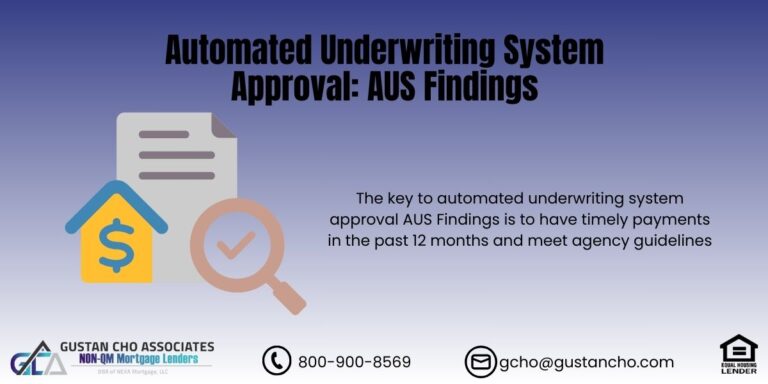FHA Underwriting Guidelines on Home Purchase and Refinances
In this article, we will cover the FHA Underwriting Guidelines on home purchase and refinance transactions. In this paragraph, we will cover what are FHA underwriting guidelines.
FHA Underwriting Guidelines are rules and regulations lenders need to follow on every mortgage loan application in order for that FHA Loan to be insured. HUD, the parent of FHA, insures lenders in the event that the Borrowers were to default on the FHA loan. HUD 4000.1 FHA Handbook is the handbook that states all of the newest FHA Underwriting Guidelines and Requirements.
What Is HUD’s Role on FHA Loans
HUD, the United States Department of Housing and Urban Development, is the parent of the Federal Housing Administration. It is the entity that creates and implements FHA Underwriting Guidelines. All FHA mortgage lenders need to abide by HUD 4000.1 Handbook. FHA Underwriting Guidelines are FHA Requirements that all lenders need to follow and go by.
However, lenders can have additional mortgage lending guidelines, called mortgage lender overlays. In this article, we will discuss and cover FHA Underwriting Guidelines On Home Purchase And Refinances.
Borrowers Who Meet HUD Guidelines May Not Meet Overlays of Certain Lenders
Overlays are additional mortgage lending guidelines that are above and beyond the minimum FHA Underwriting Guidelines. Lenders do not just have to go with the minimum FHA Underwriting Guidelines. Most lenders will have much tougher lending requirements than those of HUD. For example, here is a case scenario. HUD only requires a minimum credit score of 580 for a home buyer to qualify for an FHA loan with a 3.5% down payment.
Most lenders will have higher credit score requirements for home buyers. Many banks require borrowers to have a 640 FICO credit score requirement. Others may require a credit score of 620 FICO. There are other lenders that will require a 600 FICO credit score. All of these higher credit score minimum requirements that are higher than those required by HUD are called Overlays on credit scores.
Overlays on Debt-To-Income Ratios
It is the same with debt-to-income ratios. Lenders can have mortgage lender overlays on debt-to-income ratios, collection accounts, charge-off accounts, rental verification, credit tradelines, and waiting periods after bankruptcies.
FHA Underwriting Guidelines on Credit Scores

To be eligible for a 3.5% down payment FHA home purchase mortgage loan, HUD requires that a home buyer have a 580 FICO credit score. Many home buyers may go to their local bank or a mortgage lender who their realtor may recommend. They may be told that they do not qualify for an FHA Loan
They do not qualify because their credit scores are too low. This is even though they meet the minimum 580 score requirement. Just because you do not qualify with one lender does not mean that you will not qualify with another lender.
Not All Lenders Have the Same FHA Loan Requirements
Unfortunately, many lenders will not tell you that just because you do not qualify with them to go to a different lender where they have no lender overlays on credit scores. If you do have at least a 580 FICO credit score and are told that you do not qualify for an FHA loan because you do not meet that lender’s credit score requirements, please contact us at 800-900-8569 or text us for a faster response. Or email us at gcho@gustancho.com and we will be able to help you. A large percentage of our borrowers have credit scores under 600 FICO.
FHA Underwriting Guidelines on Debt-To-Income Ratios
FHA Underwriting Guidelines on debt-to-income ratios allow a maximum debt-to-income ratio cap of 56.9% DTI on borrowers with credit scores of 620 FICO credit scores or higher. For borrowers who have credit scores of at least 620 FICO or higher, the maximum front-end debt-to-income ratio allowed is 46.9% DTI. The maximum back-end debt-to-income ratio allowed is 56.9% DTI.
If your credit scores are lower than 620 FICO credit scores, then debt-to-income ratios will get reduced to 43% DTI to get an approve/eligible per AUS. For Borrowers who have a lower than 620 FICO but have a higher debt-to-income ratio, then I can help boost your credit scores to over 620 credit scores. This way borrowers can qualify for an FHA Loan with high debt-to-income ratios.
Lender Overlays on Debt-To-Income Ratios
Again, many lenders will have overlays on debt-to-income ratios where they can cap the debt-to-income ratios to 45% DTI, 50% DTI, and 55% DTI. If you are told that you do not qualify for an FHA loan due to high debt-to-income ratios, please contact us at 800-900-8569 or text us for a faster response. Or email us at gcho@gustancho.com and I will be able to help you since we are direct lenders with no overlays on government and conventional loans.
FHA Underwriting Guidelines on Collection and Charge Offs

Most banks and many mortgage companies will not accept borrowers with outstanding collection and charge-off accounts unless they are paid them off. HUD does not require that outstanding collection and/or charge-off accounts be paid off with a zero balance in order for you to qualify for an FHA loan. Borrowers can have outstanding collections and charge off accounts with unpaid balances and still qualify for an FHA loan without having to pay it off
However, HUD does classify collection accounts into two categories:
- Medical collection accounts
- Non-medical collection accounts
- Charge-off accounts and medical collection accounts are ignored when it comes to debt-to-income ratio calculations of their outstanding unpaid collection account balances
HUD Guidelines on Medical Versus Non-Medical Collection Accounts
However, with non-medical collection accounts where the total unpaid outstanding collection account balance is greater than $2,000, 5% of the outstanding balance will be used to calculate Borrower’s debt-to-income ratios. That figure will be used as a monthly debt payment even though the borrower does not have to pay. This can create a problem if the borrower has a large outstanding collection account balance
If this is the case, the borrower can make a written payment agreement with the creditor and/or collection agency. Whatever the amount of the monthly payment agreement is stated on the written payment agreement, that figure will be used as the monthly debt and used in the calculation of the borrower’s monthly debt-to-income ratio calculations. There are no minimum seasoning requirements and the date that the written payment agreement is executed, will be the date that the agreement will be in force and effect.
FHA Underwriting Guidelines on Waiting Period After Chapter 13 Bankruptcy Discharge Date
There is a two-year waiting period to qualify for an FHA loan After the Chapter 7 Bankruptcy discharge date. There is a three-year mandatory waiting period to qualify for an FHA loan after a foreclosure, deed in lieu of foreclosure, and short sale. However, FHA Underwriting Guidelines state that there is no waiting period to qualify for an FHA loan after a Chapter 13 Bankruptcy discharge date. But needs to be a manual underwrite if the borrower’s Chapter 13 Bankruptcy discharge has not been seasoned for less than two years
Most lenders will have overlays on borrowers who just had a Chapter 13 Bankruptcy discharge. Many will require a one-year or two-year waiting period after a Chapter 13 Bankruptcy discharge date. This is an overlay by lenders. If you are told that you need to wait one year or two years after a Chapter 13 Bankruptcy discharge date, please contact us at 800-900-8569 or text for a faster response. Or email us at gcho@gustancho.com.
Non-QM Mortgage Lenders has no lender overlays on FHA loans After the Chapter 13 Bankruptcy discharged date and can get you an FHA mortgage loan approval.






